
Fluidic Logic
Fluidic logic (fluidics) uses specially designed fluid paths to perform logic operations, such as AND, OR, and NOT gates. In electronics logical operations underpin all the digital devices that depend on CPUs for their brains. Using Computational Fluid Dynamics (CFD) we can quickly explore potential fluidic components.
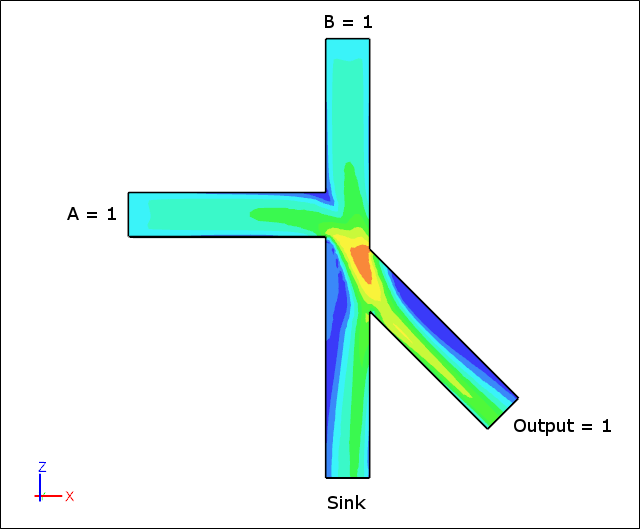 CFD Simulation of a Fluidic AND Gate
CFD Simulation of a Fluidic AND Gate
OR Gate
| A | B | Output |
| 0 | 0 | 0 |
| 0 | 1 | 1 |
| 1 | 0 | 1 |
| 1 | 1 | 1 |
A fluidic OR gate consists of two inputs, a sink, and an output.
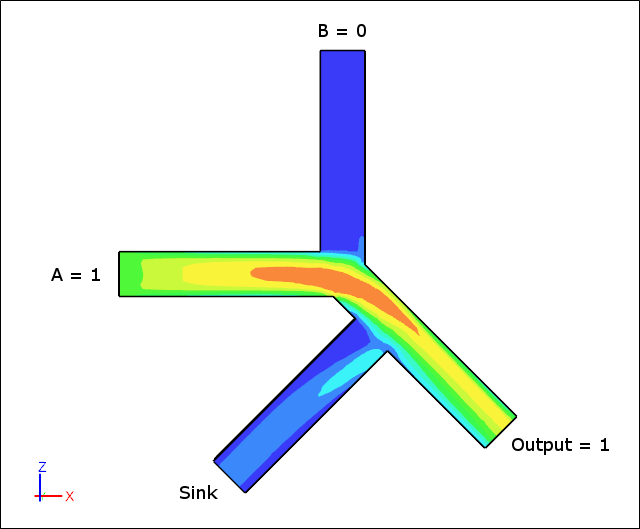 Fluidic OR Gate: Velocity MagnitudeCFD simulation of A = 1, B = 0, Output = 1
Fluidic OR Gate: Velocity MagnitudeCFD simulation of A = 1, B = 0, Output = 1
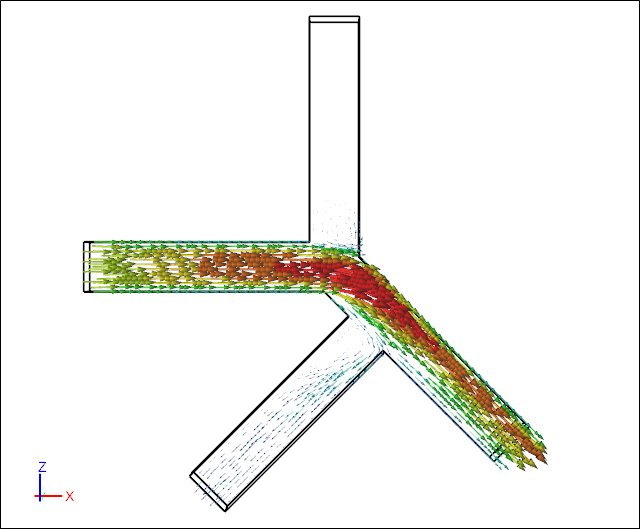 Fluidic OR Gate: Velocity VectorsCFD simulation of A = 1, B = 0, Output = 1
Fluidic OR Gate: Velocity VectorsCFD simulation of A = 1, B = 0, Output = 1
AND Gate
| A | B | Output |
| 0 | 0 | 0 |
| 0 | 1 | 0 |
| 1 | 0 | 0 |
| 1 | 1 | 1 |
A fluidic AND gate consists of two inputs, a sink, and an output.
 Fluidic AND Gate: Velocity MagnitudeCFD simulation of A = 1, B = 1, Output = 1
Fluidic AND Gate: Velocity MagnitudeCFD simulation of A = 1, B = 1, Output = 1
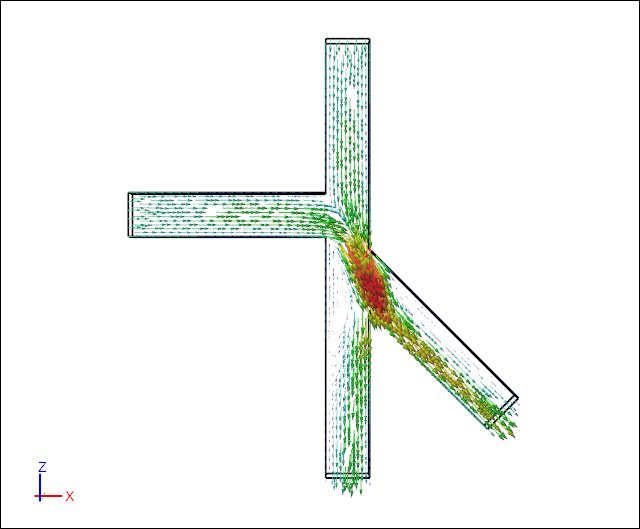 Fluidic AND Gate: Velocity VectorsCFD simulation of A = 1, B = 1, Output = 1
Fluidic AND Gate: Velocity VectorsCFD simulation of A = 1, B = 1, Output = 1
NOT Gate
| A | Output |
| 0 | 1 |
| 1 | 0 |
A fluidic NOT gate consists of one input, a source, a sink, and an output, similar to the AND gate.
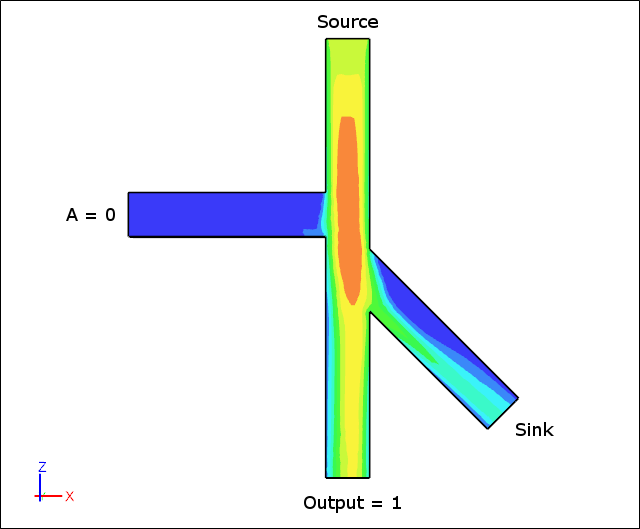 Fluidic NOT Gate: Velocity MagnitudeCFD simulation of A = 0, Output = 1
Fluidic NOT Gate: Velocity MagnitudeCFD simulation of A = 0, Output = 1
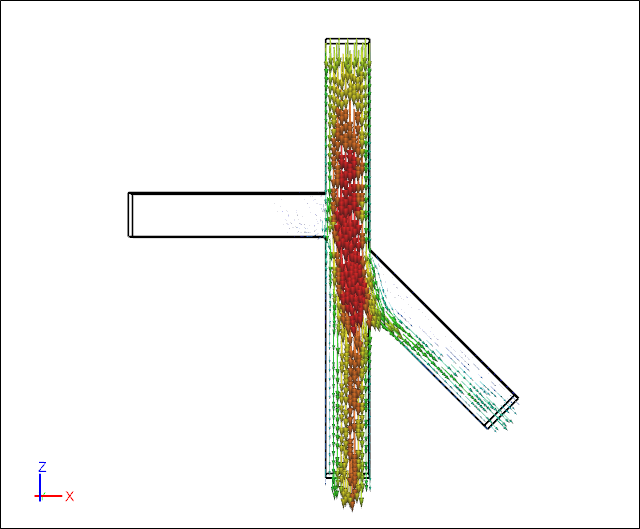 Fluidic NOT Gate: Velocity VectorsCFD simulation of A = 0, Output = 1
Fluidic NOT Gate: Velocity VectorsCFD simulation of A = 0, Output = 1
Fluidic Circuits
With these basic logic building blocks you can develop more complex fluidic circuits, which would require careful impedance matching at each junction.
- Richard Smith's blog
- Login to post comments
Select Language
Recent blog posts
- CFD Simulates Distant Past
- Background on the Caedium v6.0 Release
- Long-Necked Dinosaurs Succumb To CFD
- CFD Provides Insight Into Mystery Fossils
- Wind Turbine Design According to Insects
- Runners Discover Drafting
- Wind Tunnel and CFD Reveal Best Cycling Tuck
- Active Aerodynamics on the Lamborghini Huracán Performante
- Fluidic Logic
- Stonehenge Vortex Revealed as April Fools' Day Distortion Field

